Continuing their travels through Barcelona, our heroes spent the day exploring churches and festivals on this feast of Corpus Christi. We started out with a visit to the Sagrada Familia, the most famous church in Barcelona. It was designed by the legendary architect Antoni Gaudí, whose works can be seen all around Barcelona, but it was only a quarter of the way finished at the time of his death in 1926. Since then, its design has been carried out and overseen by various architects, and the church is hoped to be finished by the centenary of Gaudí’s death in 2026. The inside of the main nave is complete, but several towers and exterior decorations have yet to be built.
As a side note, this morning as I was riding to the church, the pedal of my bike fell off:
The only bad that came of it was that I was late to mass, but I just thought it was a funny experience that I should share.
Anyway, I went to mass in the crypt of the Sagrada Familia, the only part of the church that is free for visitors. It is apparently where Gaudí lived for the last 10 or so years of his life, which he dedicated entirely to the design of the church. The crypt looks like this – quite simple but suitable for mass and prayer:
Located in the crypt is the grave of Gaudí, where many people come to pray:
There are a lot of people who want Gaudí to be declared a saint by the Church, and are praying for miracles to that effect. He was a very religious and humble man, and despite the fame of his architecture, he wished to be little known. When was run over by a tram in Barcelona, people didn’t recognize him, so he was taken to a poor man’s hospital where he died. His works show a lot of devotion, and he is called “God’s Architect.” Here’s his paper model of the Sagrada Familia:
The church is meant to have 18 towers – 12 for the apostles, 4 for the evangelists, 1 for Jesus, and 1 for Mary. At present, only 8 of the towers have been built.
Here we are outside the church with four of the towers:
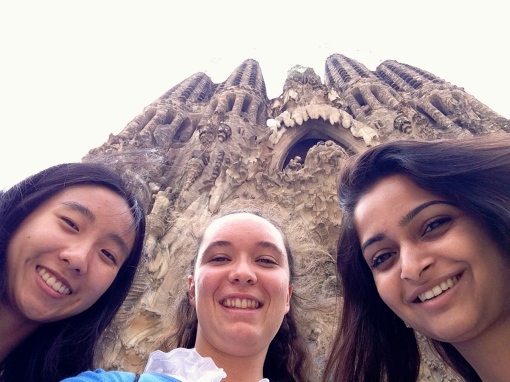
Rebecca (visiting from Madrid, where she is living this summer), me, and Anuhya outside the Sagrada Familia.
And here’s a view of the inside:
The columns that hold up the church are meant to look like trees, to give the feeling of being in a forest. Gaudí took much of his inspiration from nature, as he grew up in the beautiful Spanish countryside.
I especially enjoyed this side of the church, known as the Passion Facade, which showed simultaneously different scenes from Jesus’s passion:
In this picture you can see the scourging at the pillar (at the bottom), the wiping of Jesus’s face with Veronica’s veil (middle), the crucifixion (top), and several other scenes. I also really liked that on the doors to this side of the building were written in Catalán long stretches of the gospel describing the Passion, with important words and phrases highlighted in gold, such as Pilate’s famous question, “What is truth?”
There was a museum in the basement with more info on Gaudí and his several designs of houses and parks throughout Barcelona. I enjoyed seeing this photo of the dedication ceremony of the Sagrada Familia as a Basilica, which happened in 2010.
Pope Benedict XVI came to celebrate the dedication mass with a crowd of thousands of people. The choir loft alone seats 1000 singers. That must have been an amazing event.
All in all, I loved this church, and I am so glad that I went. It was so different from the other basilicas and cathedrals that I have seen here in Spain, with a much more modern feel. It had a different kind of beauty than that of the churches filled with paintings and statues galore, but it was a beauty that also pointed to God.
For lunch, we stopped into a Tapas restaurant, where, by American standards, the service was terrible – extremely slow – but the food was excellent. Some of my favorite dishes were the mushrooms with ham and the octopus with mashed potatoes:
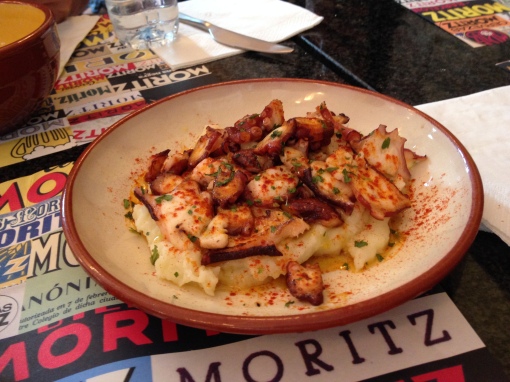
Octopus with mashed potatoes. I loved the flavor of the octopus, and the texture was perfect – slightly chewy but not rubbery.
Continuing our adventures, we decided to go visit the Castle of Montjuïc, which is free on Sunday afternoons. One of the highlights of the trip was taking a cable car up the mountain:
The music is from a party that happens every Sunday during the summertime at Montjuïc, where families can come and listen to music while the kids play at a carnival.
Atop the castle, there was a 360 degree view of Barcelona. Not only could we see the city, but also the Sea:
The Castle has been an important military location for Spain since 1640 when a fort was built atop Montjuïc. It reminded me of the Revolutionary and Civil War era forts and monuments that I’ve seen in the US.
For the evening, we headed back down the mountain to attend the Corpus Christi festivities near the Barcelona Cathedral. It started with displays of traditional Catalan dancers:
Next came the human castles, the Castellers:
Finally, the giants started to dance:
Next, there was a parade of all sorts of wooden animals and people in traditional outfits with music and dancing, leading up to the Cathedral, where the Eucharistic procession would begin. Here’s a dragon that danced through the streets:
There was an outdoor mass in front of the Cathedral, and once it was over, the procession began:
After the procession, I met up with Gemma, the girl that I went to dinner with the other day, and some of her friends, and we got in line to shake hands with the Cardinal-Archbishop of Barcelona. He wished us good luck in our studies. We then went out for ice cream and talked a little before heading home for the night.

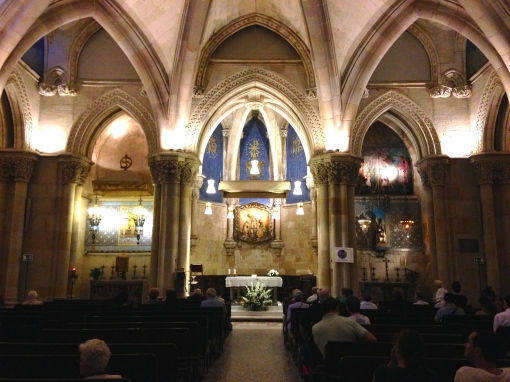
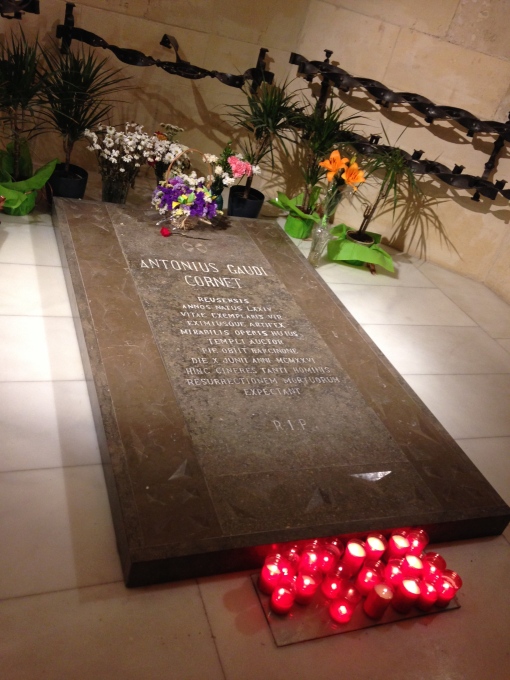
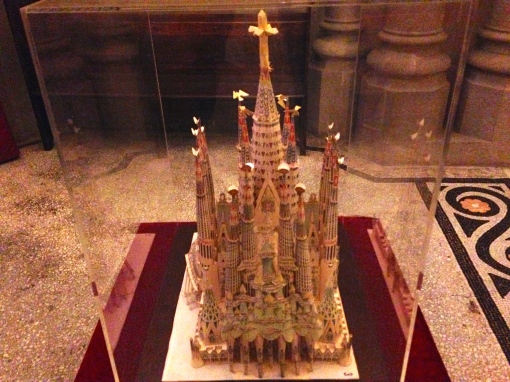
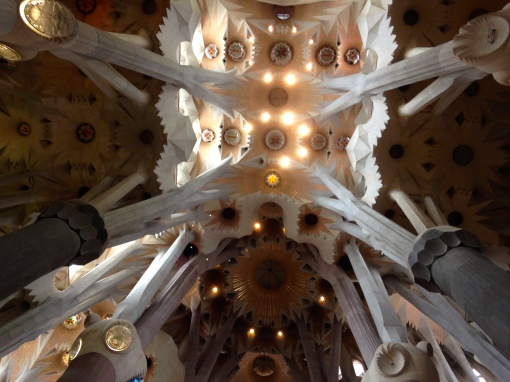
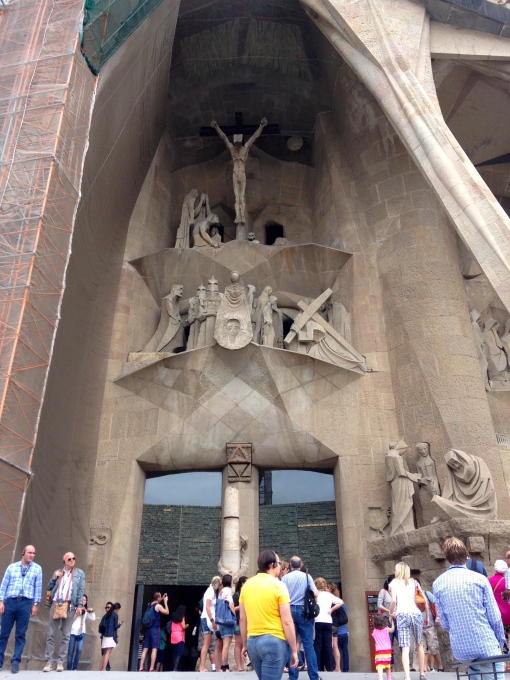
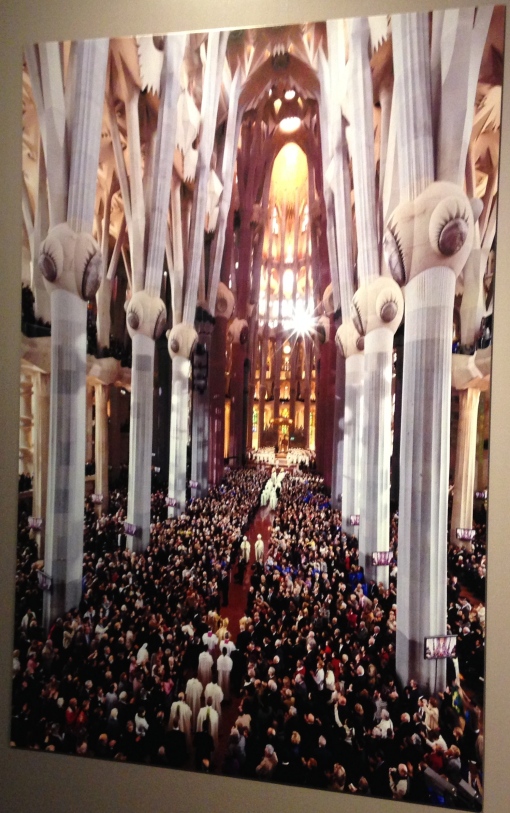
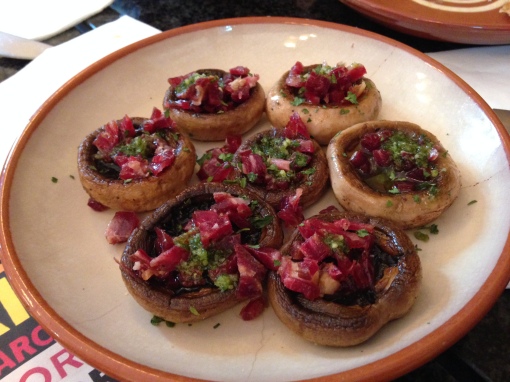
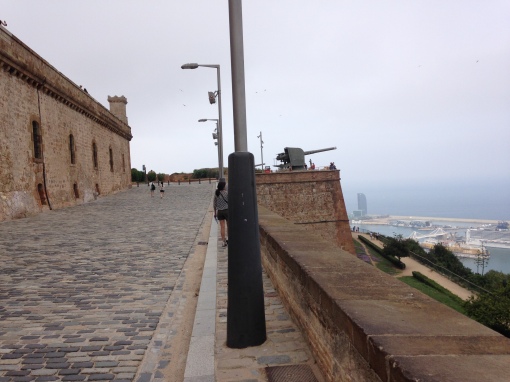
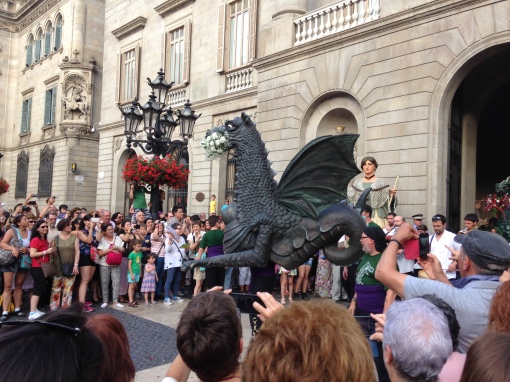

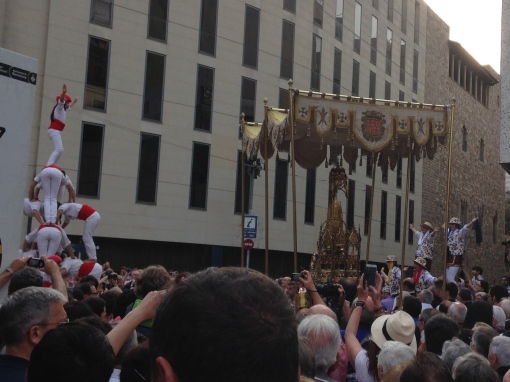
I always think those columns look like the chordae tendinae of a heart. Didn’t realize there were so many more towers left to be built.
That food looks amazing! Love the plates, too.